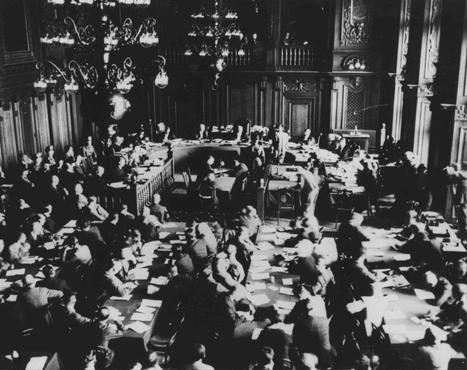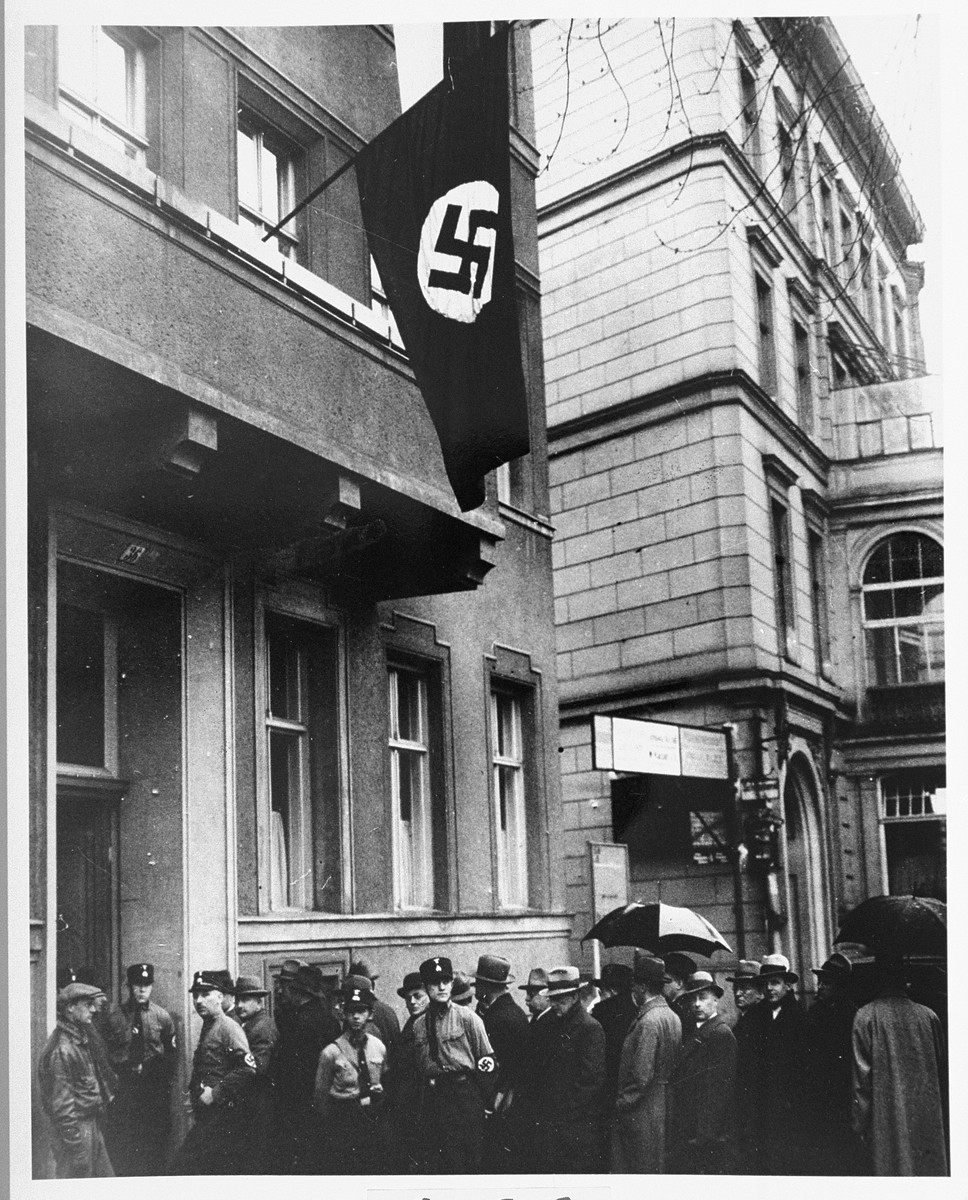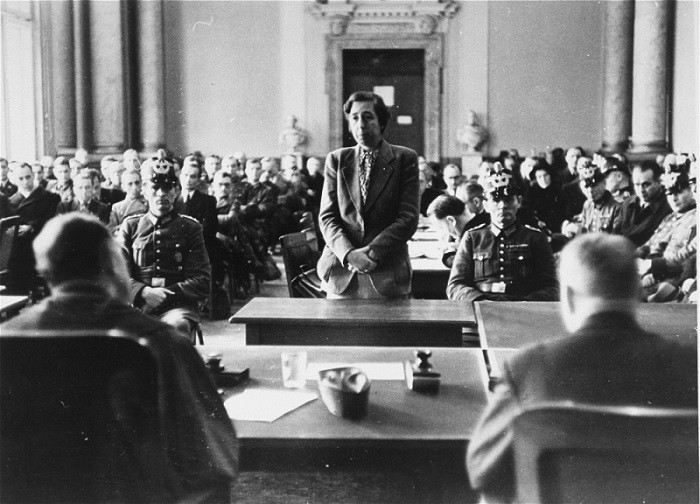
Law and Justice in the Third Reich
The Third Reich was a police state characterized by arbitrary arrest and imprisonment of political and ideological opponents in concentration camps.
With the reinterpretation of "protective custody" (Schutzhaft) in 1933, police power became independent of judicial controls. In Nazi terminology, protective custody meant the arrest—without judicial review—of real and potential opponents of the regime. "Protective custody" prisoners were not confined within the normal prison system but in concentration camps under the exclusive authority of the SS (Schutzstaffel; the elite guard of the Nazi state).

The Third Reich has been called a dual state, since the normal judicial system coexisted with the arbitrary power of Hitler and the police. Yet, like most areas of public life after the Nazi rise to power in 1933, the German system of justice underwent "coordination" (alignment with Nazi goals). All professional associations involved with the administration of justice were merged into the National Socialist League of German Jurists. In April 1933, Hitler passed one of the earliest antisemitic laws, purging Jewish and also Socialist judges, lawyers, and other court officers from their professions. Further, the Academy of German Law and Nazi legal theorists, such as Carl Schmitt, advocated the nazification of German law, cleansing it of "Jewish influence." Judges were enjoined to let "healthy folk sentiment" (gesundes Volksempfinden) guide them in their decisions.
Hitler determined to increase the political reliability of the courts. In 1933 he established special courts throughout Germany to try politically sensitive cases. Dissatisfied with the 'not guilty' verdicts rendered by the Supreme Court (Reichsgericht) in the Reichstag Fire Trial, Hitler ordered the creation of the People's Court (Volksgerichtshof) in Berlin in 1934 to try treason and other important "political cases." Under Roland Freisler, the People's Court became part of the Nazi system of terror, condemning tens of thousands of people as "Volk Vermin" and thousands more to death for "Volk Treason." The trial and sentencing of those accused of complicity in the July Plot, the attempt to kill Hitler in July 1944, was especially unjust.

After the war, prominent Nazi jurists like Curt Rothenberger, Franz Schlegelberger, and Josef Altstoetter were tried in the Jurists' Trial of the Subsequent Nuremberg Proceedings on charges of "judicial murder" and other atrocities.
This case is unusual in that the defendants are charged with crimes committed in the name of the law. These men, together with their deceased or fugitive colleagues, were the embodiment of what passed for justice in the Third Reich.
—Telford Taylor
Critical Thinking Questions
- What pressures and motivations may have affected members of the legal profession as the Nazi government consolidated its power in the 1930s?
- What is the appropriate relationship between a government and the judiciary?
- What is the appropriate relationship between ideology and the judiciary?

